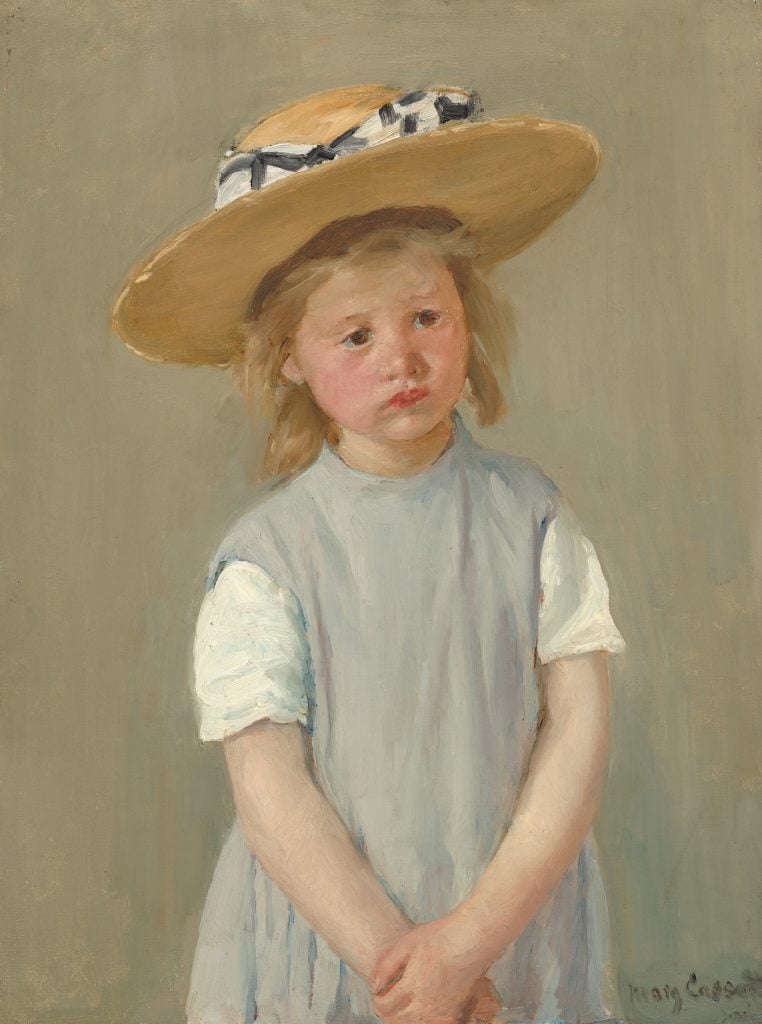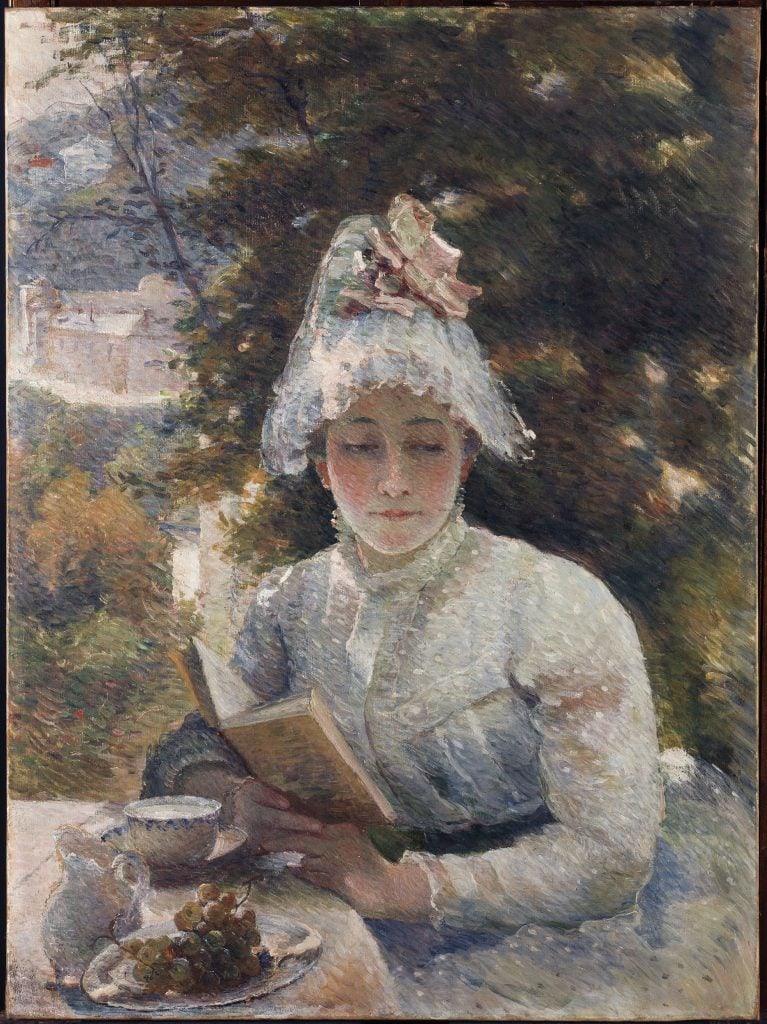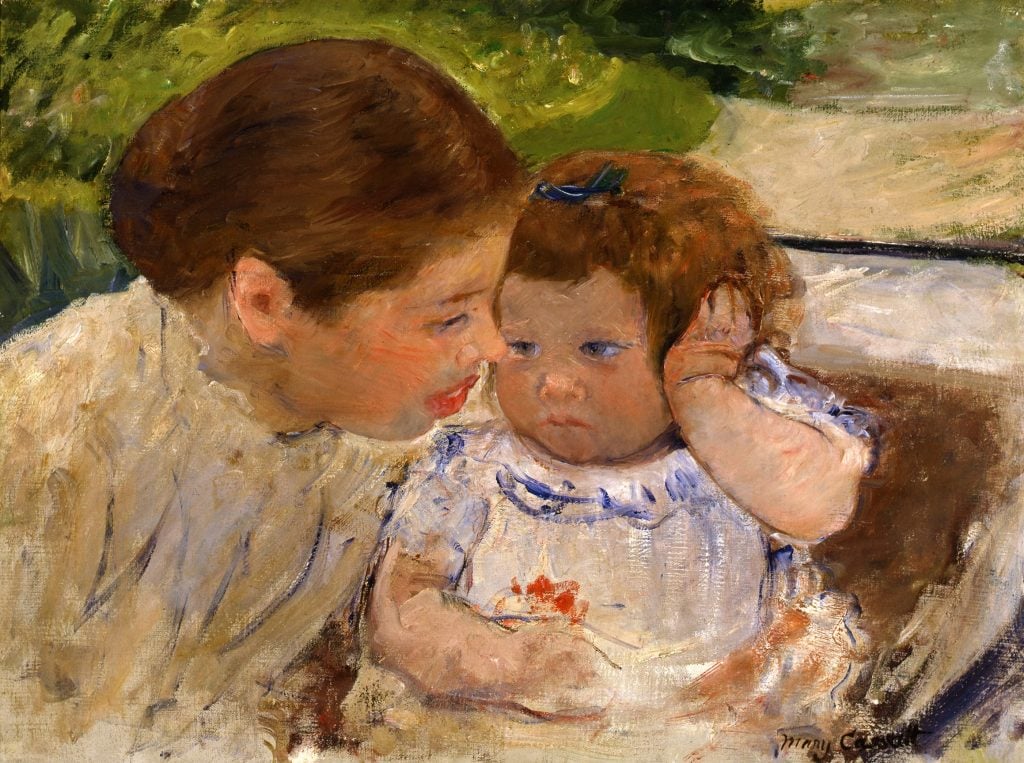Art & Exhibitions
A Major Museum Survey Honors the Four ‘Grandes Dames’ of Impressionism
The National Gallery of Ireland casts a light on Bracquemond, Cassatt, Gonzalès, and Morisot.

The National Gallery of Ireland casts a light on Bracquemond, Cassatt, Gonzalès, and Morisot.

Artnet News

The four grandes dames of the French Impressionist movement will be spotlighted in a major survey at the National Gallery of Ireland that opens today. “Women Impressionists” takes place at the 150th anniversary of the first Impressionist exhibition, mounted in Paris in 1874, and focuses on Marie Bracquemond, Mary Cassatt, Eva Gonzalès, and Berthe Morisot. It’s the first show to bring together the four artists under one roof on the Emerald Isle.
Organized by the National Gallery in collaboration with Odrupgaard, a museum devoted to French Impressionism and sited in Charlottenlund, Denmark, the show features works from their collections along with examples on loan from private collections in the U.S. and Europe. The show is overseen by National Gallery curator of modern art Janet McLean and the Ordrupgaard’s senior curator Dorthe Vangsgaard Nielsen.

Eva Gonzalès, Children Playing on Sand Dunes, Grandcamp (1877-1878). Courtesy National Gallery of Ireland.
Cassatt and Morisot are nearly as well known as their male counterparts in the movement. Cassatt’s work appears in collections such as the Metropolitan Museum of Art, New York; the Museum of Fine Arts, Houston; and the Philadelphia Museum of Art; her Child in a Straw Hat (1886), which appears in the exhibition in Dublin, on loan from the National Gallery of Art in Washington, D.C., is an icon.

Mary Cassatt, Child in a Straw Hat (ca.1886). Courtesy National Gallery of Art, Washington.
Morisot, for her part, was married to Édouard Manet’s brother Eugène, and participated in many of the major exhibitions staged by the Impressionists. Her works appear in collections such as the National Gallery of Art, Washington, D.C.; the Art Institute of Chicago; the Musée d’Orsay, Paris; and the Cleveland Museum of Art.

Marie Bracquemond, Afternoon Tea (Le Goûter) (ca.1880). CC0 Paris Musées / Petit Palais, musée des Beaux-Arts de la Ville de Paris.
Bracquemond and Gonzalès are not the household names that Cassatt and Morisot have become, but moved in the uppermost circles of the French art scene of their day.

Mary Cassatt, Susan Comforting the Baby No.1 (ca. 1881). Courtesy Columbus Museum of Art
Bracquemond began to show her work at the Paris Salon when she was just an adolescent, and while she didn’t study art formally, she did receive some instruction from Jean-Auguste Dominique Ingres, as well as advice from Paul Gauguin.

Berthe Morisot, The Artist’s Daughter, Julie, with her Nanny (ca. 1884). Courtesy Minneapolis Institute of Art. Licenced under CC BY 4.0.
She and her husband, printmaker Félix Bracquemond, produced ceramic art for Haviland & Co, a maker of Limoges porcelain. She participated in three of the major Impressionist exhibitions, in 1879, 1880, and 1889. Much of her work disappeared into private collections, its whereabouts unrecorded.
Gonzalès was a model and the only formal student to Édouard Manet, who once painted her at her easel in a work now hanging in London’s National Gallery. She also sat for several other Impressionist painters. Her work was well received by critics of the periodic Salon exhibitions, including Émile Zola. She died in childbirth in 1883, at the age of 34.
“Women Impressionists” is at the National Gallery of Ireland, Merrion Square West, Dublin 2, Ireland through October 6, 2024.